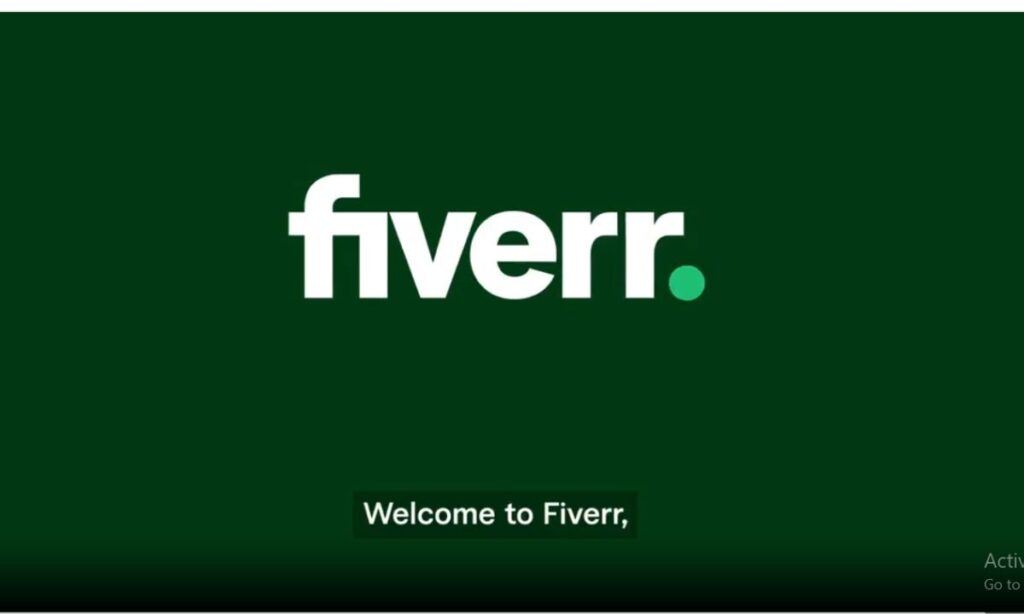Freelancing is no longer just a side hustle; it’s a full-fledged career option embraced by millions around the globe. Whether you’re an aspiring freelancer or a seasoned pro, understanding the nuances of this dynamic industry is crucial to your success. This guide will take you through essential tips for freelancing, from discovering your niche to mastering the art of time management. These freelancing tips will help you build a thriving career on your terms.
By the end of this post, you’ll have a roadmap to becoming a successful freelancer and carving out your unique space in the gig economy.
What Makes Freelancing Unique?
Before we dive into the tips, let’s address what makes freelancing so appealing and challenging.
Benefits of Freelancing
- Flexibility: Work when and where you want.
- Autonomy: Be your own boss.
- Variety: Choose projects that excite you.
- Unlimited earning potential: Your income is only capped by your skills and effort.
Challenges of Freelancing
- Uncertainty: Income isn’t guaranteed.
- Competition: Standing out can be tough.
- Time management: Balancing multiple projects requires discipline.
- Client management: Dealing with difficult clients or unclear expectations can be stressful.
Now that we’ve covered the basics, let’s explore actionable strategies for freelancing success.
Find Your Niche: The Cornerstone of Success
Freelancing offers limitless opportunities, but trying to do it all often leads to burnout. That’s why finding your niche is critical.
Benefits of Specializing
- Establishes authority: Clients trust experts more than generalists.
- Simplifies marketing: It’s easier to target a specific audience.
- Boosts efficiency: You’ll work faster and deliver better results.
Steps to Identify Your Niche
- Self-Reflection:
- What are your strengths and passions?
- What skills have you honed through education or experience?
- Market Research:
- Use tools like Google Trends or freelance platforms to see what’s in demand.
- Browse job postings to identify popular niches.
- Experimentation:
- Take on a variety of projects initially to see what you enjoy most.
- Narrow your focus based on feedback and results.
Pro Tip: If you’re struggling to pick a niche, look at overlapping areas of your interests and market needs. For example, “graphic design for tech startups” is more specific and marketable than “graphic design.”
Define Your Expertise: Build Trust with Clarity
Once you’ve chosen your niche, it’s time to define your expertise clearly. This step ensures potential clients know exactly how you can help them.
How to Define Your Expertise
- Craft an Elevator Pitch: Summarize what you do in 1-2 sentences. For example:
- “I’m a content writer specializing in SEO-friendly blogs for small businesses to help them rank higher on Google.”
- Showcase Your Achievements: Highlight certifications, awards, or notable projects.
- Tailor Your Messaging: Speak directly to your target audience’s needs and goals.
Pro Tip: Use your niche and expertise in your LinkedIn headline, freelancing profiles, and portfolio. Consistency across platforms builds credibility.
Building a Strong Portfolio: Let Your Work Speak
A portfolio isn’t just a collection of past projects; it’s your ticket to winning clients. A well-crafted portfolio demonstrates your skills and sets you apart from the competition.
Key Elements of a Portfolio
- Your Best Work: Include only high-quality examples relevant to your niche.
- Case Studies: Detail the problem, your solution, and the results.
- Client Testimonials: Positive feedback adds credibility.
- Visual Appeal: Use a clean design that aligns with your personal brand.
How to Build a Portfolio When Starting Out
- Offer free or discounted work to friends or small businesses in exchange for permission to showcase the work.
- Create mock projects that demonstrate your skills.
- Collaborate with other freelancers to gain experience.
Pro Tip: Tools like Behance, Dribbble, or creating your own website using platforms like Wix or WordPress can help showcase your portfolio professionally.
Build Your Digital Presence: Become Discoverable
Your online presence is often the first impression potential clients have of you. A strong digital footprint makes it easier for clients to find and trust you.
Essential Platforms
- LinkedIn: Optimize your profile with a professional photo, compelling headline, and detailed experience section.
- Freelance Marketplaces: Platforms like Upwork or Fiverr can help you get your first clients.
- Personal Website: Create a site that houses your portfolio, services, and contact details.
Pro Tip: Consistency is key. Use the same professional photo, username, and branding across all platforms.
Understand Market Rates: Get Paid What You’re Worth
One of the most challenging aspects of freelancing is determining how much to charge. Charging too low undervalues your work while overpricing can scare away clients.
How to Set Your Rates
- Research: Use resources like Glassdoor, and freelance forums, or ask peers in your niche.
- Consider Your Costs: Include expenses like software, equipment, and taxes.
- Value Your Expertise: Experience and niche expertise can justify higher rates.
Pro Tip: Start with a competitive rate and adjust as your portfolio and reputation grow.
Know Your Target Market: Speak Their Language
Freelancing success isn’t just about your skills; it’s about how well you connect with your ideal clients.
Steps to Identify Your Target Audience
- Define Their Characteristics: Industry, job role, company size, etc.
- Understand Their Pain Points: What challenges do they face that you can solve?
- Tailor Your Offer: Align your services with their needs and goals.
Pro Tip: Use client personas to visualize your ideal customer and craft your marketing messages.
Create a Winning Profile: Your Online Resume
Your profile on freelancing platforms is the first thing clients see. A poorly written profile can cost you opportunities, while a well-crafted one can make you stand out.
Steps to Create a Winning Profile
- Choose a Professional Profile Picture: Your photo should convey approachability and professionalism. Avoid casual selfies or group photos.
- Write a Compelling Headline: Use keywords relevant to your skills and niche. Example: “SEO Copywriter | Engaging Content to Boost Traffic.”
- Craft an Engaging Summary: Highlight your expertise, experience, and how you can solve the client’s problem. Use an approachable tone.
- List Your Skills Strategically: Include skills that align with your target clients’ needs.
Pro Tip: Regularly update your profile to include new achievements, certifications, or skills.
Ask for Feedback and Referrals: Build Credibility
Feedback is essential for growth, while referrals can open new opportunities.
How to Request Feedback
- Be Specific: Ask clients for input on your strengths and areas for improvement.
- End of Project Surveys: Create a short survey to gauge client satisfaction.
Why Referrals Work
Referrals often come with built-in trust, as they’re based on recommendations from satisfied clients.
Pro Tip: Offer incentives, such as a discount, to encourage clients to refer you to others.
Master Time Management: Work Smarter, Not Harder
Time management can make or break your freelancing career. Poor time management leads to missed deadlines, unhappy clients, and burnout.
Time Management Techniques
- Use the Pomodoro Technique: Work in focused 25-minute intervals followed by short breaks.
- Prioritize Tasks: Focus on high-impact tasks first. Tools like the Eisenhower Matrix can help.
- Set Boundaries: Clearly define your work hours to avoid overworking.
Pro Tip: Use time-tracking tools like Toggl or Clockify to understand how you spend your time and identify inefficiencies.
Use Freelancing Websites Effectively
Freelance platforms like Upwork, Fiverr, and Freelancer are goldmines for finding work, but success requires a strategic approach.
Tips for Freelancing Platforms
- Personalize Proposals: Avoid copy-pasting. In your proposal, address the client’s specific needs.
- Leverage Reviews: Deliver outstanding work to build a positive reputation.
- Start Small: Take smaller gigs initially to develop your profile and gain reviews.
Pro Tip: Regularly refresh your profile and apply for projects that match your expertise.
Observe and Learn from Other Freelancers
One of the best ways to grow is by observing those who are already successful in your field.
What to Look For
- Their Portfolio: Analyze how they present their work.
- Pricing Strategy: Notice how they price their services.
- Client Interaction: Observe their tone and style in testimonials or reviews.
Pro Tip: Join freelancing communities or forums to network and learn from peers.
Communicate Clearly and Regularly: Build Strong Relationships
Clear communication is the foundation of a successful client-freelancer relationship.
Tips for Effective Communication
- Set Expectations: Outline project deliverables, timelines, and payment terms upfront.
- Provide Regular Updates: Share progress updates to keep clients in the loop.
- Be Proactive: Address potential issues before they escalate.
Pro Tip: Use tools like Slack or email for regular communication and project management platforms like Trello or Basecamp for updates.
Ask Questions and Be Transparent
Transparency builds trust and ensures both you and the client are aligned on project goals.
Key Questions to Ask Clients
- What is your primary goal for this project?
- Are there any specific preferences or styles I should follow?
- What is your preferred method of communication?
Pro Tip: Create a checklist of questions to ask during the initial consultation to ensure clarity.
Create a Personal Brand: Stand Out
Your personal brand is how clients perceive you. A strong brand can make you memorable and attract more opportunities.
How to Build Your Brand
- Develop a Unique Voice: Choose a tone and style that reflect your personality.
- Be Consistent: Use the same colors, fonts, and logos across platforms.
- Share Your Story: Use your “About Me” sections to share your journey and values.
Pro Tip: Consistent branding across all platforms builds trust and recognition.
Common Freelancing Mistakes to Avoid
Even seasoned freelancers can fall into traps that hinder their success. Here are a few common mistakes to steer clear of:
- Underpricing Services: Don’t undervalue your work to win clients.
- Taking on Too Much Work: Overcommitting leads to missed deadlines and burnout.
- Failing to Market Yourself: Consistently promote your services to keep your pipeline full.
- Ignoring Contracts: Always have a clear agreement in place before starting any work.
Pro Tip: Learn from mistakes and adjust your strategies accordingly.
Tools and Resources for Freelancers
Leverage tools and resources to streamline your freelancing journey.
Must-Have Tools
- Project Management: Asana, Trello
- Time Tracking: Clockify, Toggl
- Invoicing: FreshBooks, Wave
- Design: Canva, Adobe Creative Suite
- Communication: Slack, Zoom
Pro Tip: Invest in tools that save you time and enhance productivity. Most have free versions or trials, so test before committing.
Final Thoughts
Freelancing is more than just a career—it’s a lifestyle that offers unparalleled freedom and opportunities. By following these freelancing tips, you’ll be equipped to navigate challenges, attract ideal clients, and build a sustainable career.
Remember, success doesn’t happen overnight. It’s a journey of continuous learning, adaptation, and persistence. Stay committed to your goals, embrace feedback, and celebrate your milestones along the way.
Your freelancing adventure is what you make of it. Dive in, stay focused, and let your success story unfold!
FAQs
What is freelancing?
Freelancing is a type of self-employment where individuals offer their skills and services to clients on a project or contract basis, rather than working as a full-time employee for a single employer.
How can I start freelancing with no experience?
Starting freelancing with no experience involves:
Identifying your skills and interests.
Building a small portfolio by creating mock projects or offering your services for free or at a discounted rate initially.
Joining freelancing platforms like Upwork, Fiverr, or Freelancer.
Networking with friends, family, or communities to find initial clients.
What is a freelancing niche, and why is it important?
A freelancing niche is a specific area of expertise or focus within your field. For example, instead of being a general graphic designer, you might specialize in logo design for startups. Niches help reduce competition, attract targeted clients, and allow you to charge higher rates due to your specialized skills.
How do I decide what to charge as a freelancer?
To determine your rates:
Research what other freelancers in your niche and skill level charge.
Calculate your expenses, including taxes, tools, and living costs.
Start with a competitive rate, and increase as you gain experience and build your portfolio.
Why is building a portfolio so important for freelancers?
A portfolio showcases your skills, experience, and the results you’ve achieved for previous clients. It acts as proof of your abilities and helps potential clients decide to hire you. Even if you’re starting, you can create mock projects or personal work to display in your portfolio.
Why is building a portfolio so important for freelancers?
To determine your rates:
Research what other freelancers in your niche and skill level charge.
Calculate your expenses, including taxes, tools, and living costs.
Start with a competitive rate, and increase as you gain experience and build your portfolio.
A portfolio showcases your skills, experience, and the results you’ve achieved for previous clients. It acts as proof of your abilities and helps potential clients decide to hire you. Even if you’re starting, you can create mock projects or personal work to display in your portfolio.
How can I manage my time effectively as a freelancer?
Time management tips for freelancers include:
Prioritizing tasks based on deadlines and importance.
Using time management tools like Trello, Asana, or Clockify.
Setting boundaries by defining work hours.
Breaking projects into smaller, manageable tasks to avoid feeling overwhelmed.
What are the best freelancing websites to find clients?
Popular freelancing websites include:
Upwork
Fiverr
Freelancer
Toptal (for experienced professionals)
PeoplePerHour
Guru
How do I build my digital presence as a freelancer?
To build a strong digital presence:
Create a professional LinkedIn profile with a clear headline and portfolio.
Build a personal website showcasing your services and contact information.
Use social media to share your expertise, such as posting tips or success stories.
Join online communities or forums related to your niche.
What are the best freelancing websites to find clients?
Popular freelancing websites include:
Upwork
Fiverr
Freelancer
Toptal (for experienced professionals)
PeoplePerHour
Guru
How do I build my digital presence as a freelancer?
To build a strong digital presence:
Create a professional LinkedIn profile with a clear headline and portfolio.
Build a personal website showcasing your services and contact information.
Use social media to share your expertise, such as posting tips or success stories.
Join online communities or forums related to your niche.
Why is client communication important in freelancing?
Clear and consistent communication helps:
Set expectations for project outcomes and deadlines.
Build trust and transparency with clients.
Ensure the client’s vision aligns with the work you deliver.
Avoid misunderstandings and disputes.
What is the best way to get referrals as a freelancer?
The best ways to get referrals include:
Delivering excellent work that encourages clients to recommend you.
Asking satisfied clients directly for referrals.
Offering referral incentives, such as discounts or bonuses for each new client they refer.
Welcome to Digital Profit Track, sharing powerful tips on digital marketing, freelancing, and online earning to help you achieve financial freedom.
Contact me at: team@digitalwsf.com.




